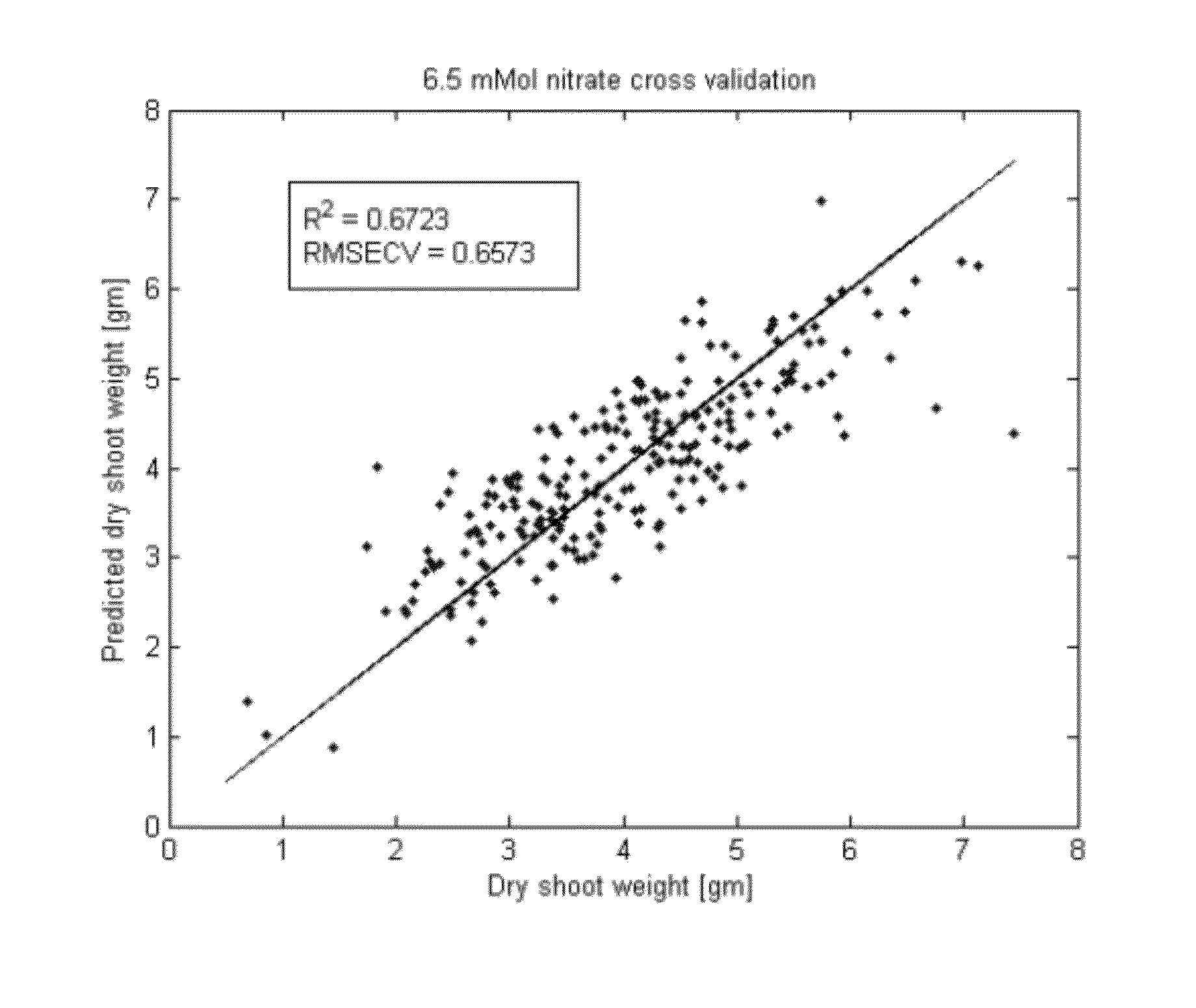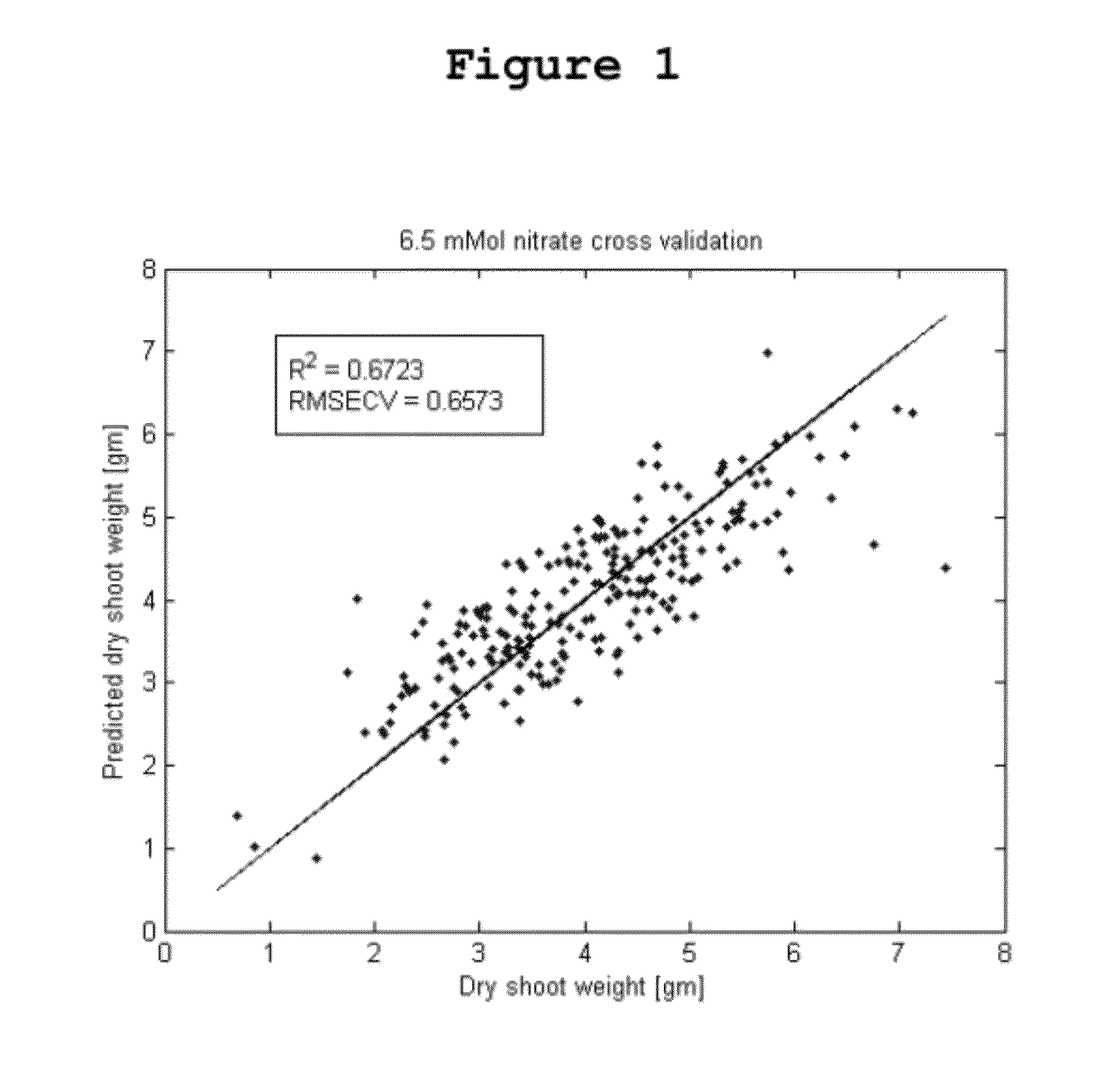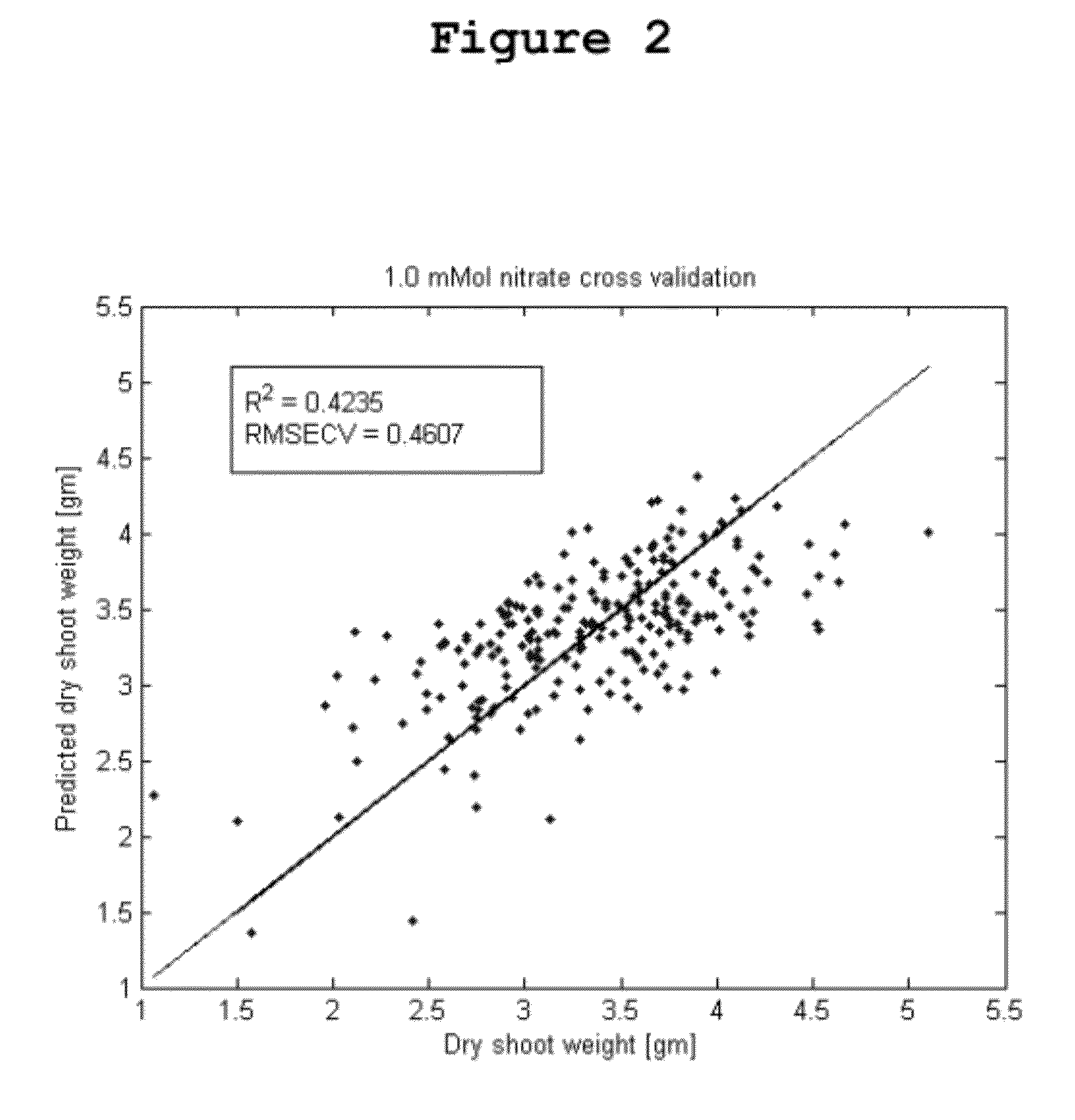Prediction of phenotypes and traits based on the metabolome
- Summary
- Abstract
- Description
- Claims
- Application Information
AI Technical Summary
Benefits of technology
Problems solved by technology
Method used
Image
Examples
example 1
Quantitative Prediction of Relative Plant Biomass and Nitrogen Use Efficiency Under Nitrogen Deprivation
[0182]Relative plant biomass and nitrogen use efficiency (NUE) were predicted in corn using the methods of the invention. Plant biomass was observed as an indicator of plant productivity under different treatment conditions. As used herein, “nitrogen use efficiency” or “NUE” is defined as the ratio of aerial plant biomass under low nitrogen conditions to the aerial plant biomass under normal nitrogen conditions. Relative plant biomass and NUE were predicted using 250 inbred corn lines. Twelve replicates of each inbred line were grown under normal nitrogen solutions (6.5 mMol nitrate) or low nitrogen solutions (1.0 mMol nitrate). Six batches of each group of plants were grown over six time periods from August to January, and the plants were sampled for metabolomics at vegetative stage 7. Characterization of plant metabolic and phenotypic profiles was accomplished as described herei...
example 2
Qualitative Class Prediction for Ranking Transgenes in Response to Drought
[0197]A PLSDA classification model was used to predict the qualitative effect of two drought-tolerance genes in transgenic corn plants. As demonstrated herein below, the metabolome can be used to gauge the efficacy of genetic modifications by comparing the proximity of the stressed metabolome to a PLSDA classification model built between unmodified restricted water plants and unmodified well-watered plants. This can be accomplished through a dimensionally-reduced class prediction. In the PLSDA classification model, each metabolite is weighted according to its ability to separate the treatments. The model can then be used to predict the transgenically modified plants' response to stress.
[0198]In the present example, two drought-tolerance constructs were tested in a greenhouse drought assay. Control plants were used that had independent planting dates for each of the constructs. Transgenic plant seeds were obtai...
example 3
Qualitative Prediction of Transgene Responses
[0200]In the widescale testing of transgenic hybrids expressing a gene of interest, a high yielding preferred phenotype was observed. Twenty two hybrids expressing the gene of interest were planted in Chile in a field experiment. Hybrids from the same genotype with different gene stacks were also included to provide metabolic contrasts. Based on the extensive product testing, hybrids were classified according to the observation of the yield effects.
[0201]A PLSDA model was calculated using a single genotype with the gene of interest incorporated into the hybrid from each of the parents. In the Chile experiment, one of these common parent hybrids exhibited a high yielding phenotype, while the other did not. The classes in this PLSDA model were designated high yield and other. The model was improved through variable selection, using a genetic algorithm and the other hybrids as a validation set. Using the predictions from the replicates, a pr...
PUM
 Login to View More
Login to View More Abstract
Description
Claims
Application Information
 Login to View More
Login to View More - R&D
- Intellectual Property
- Life Sciences
- Materials
- Tech Scout
- Unparalleled Data Quality
- Higher Quality Content
- 60% Fewer Hallucinations
Browse by: Latest US Patents, China's latest patents, Technical Efficacy Thesaurus, Application Domain, Technology Topic, Popular Technical Reports.
© 2025 PatSnap. All rights reserved.Legal|Privacy policy|Modern Slavery Act Transparency Statement|Sitemap|About US| Contact US: help@patsnap.com



